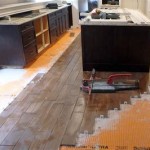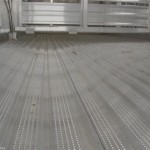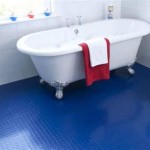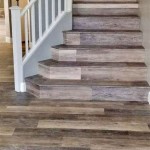Are Cherry Wood Floors Out of Style in 2024?
The question of whether cherry wood floors are out of style in 2024 is complex and requires a nuanced understanding of current design trends, regional variations, personal preferences, and the enduring qualities of the material itself. Cherry wood, known for its rich color and distinctive grain patterns, has been a popular flooring choice for decades. Its status in contemporary design, however, is subject to ongoing evolution.
To assess the viability of cherry wood floors in the modern design landscape, it is necessary to consider various factors, including competing flooring materials, evolving aesthetic preferences, and the specific attributes that make cherry wood a desirable – or undesirable – choice for certain spaces. Furthermore, understanding how cherry wood can be incorporated into different design styles, from traditional to modern, is crucial to determining its continued relevance.
One must also recognize that "style" is a fluid concept. What is considered "in" one year might be deemed "out" the next. Therefore, a more pragmatic approach involves evaluating cherry wood floors based on their inherent strengths and weaknesses, considering how these align with current design priorities such as sustainability, durability, and adaptability.
The Enduring Appeal of Cherry Wood
Cherry wood possesses several characteristics that contribute to its enduring appeal. Its rich, reddish-brown hue is naturally warm and inviting, creating a sense of elegance and sophistication in a room. This inherent warmth can be particularly desirable in colder climates or in spaces where a cozy and welcoming atmosphere is sought. The color deepens and becomes richer over time with exposure to light, a process known as oxidation, adding character and depth to the flooring. This aging process is often considered a desirable quality, as it enhances the wood's natural beauty.
The grain pattern of cherry wood is another significant factor in its aesthetic appeal. It typically exhibits a fine, consistent grain with occasional knots and swirls, providing visual interest without being overly busy or distracting. This balanced grain pattern makes cherry wood versatile enough to complement a variety of design styles. It can be equally at home in a traditional dining room or a contemporary living space.
Furthermore, cherry wood is a relatively durable hardwood, although it is softer than some other popular flooring options like oak or maple. With proper care and maintenance, cherry wood floors can last for many years, making them a worthwhile investment. Regular cleaning, protective finishes, and precautions against excessive moisture and heavy impacts are essential to preserving the integrity and beauty of cherry wood flooring.
Factors Influencing Cherry Wood's Perceived Style
Several factors contribute to the perception of whether cherry wood floors are "in style" or "out of style" at any given time. One key factor is the prevalence of alternative flooring materials. In recent years, engineered hardwood, luxury vinyl plank (LVP), and tile have gained significant popularity, often due to their affordability, durability, and ease of maintenance. The availability of these alternatives influences consumer choices and can shift the perception of traditional materials like cherry wood.
Evolving aesthetic preferences also play a crucial role. Current design trends often favor lighter, more neutral color palettes. Gray tones, light-colored woods like white oak, and minimalist designs are particularly popular. This trend can make the naturally warm and reddish tones of cherry wood seem less aligned with contemporary aesthetics. However, design trends are cyclical, and preferences can shift over time. The warmth and richness of cherry wood might regain popularity as tastes evolve away from the dominance of neutral and minimalist styles.
The specific design context also influences the perceived style of cherry wood floors. In a traditional or formal setting, cherry wood might be considered a classic and timeless choice. However, in a modern or minimalist setting, it could be perceived as dated or out of place. Therefore, the overall design of the room, including the furniture, wall colors, and architectural details, must be considered when evaluating the suitability of cherry wood flooring.
Regional variations in design preferences can also affect the perception of cherry wood. In some regions, traditional styles remain more popular, and cherry wood flooring might still be widely appreciated. In other regions, where contemporary designs dominate, it might be seen as less fashionable. Therefore, generalizations about the "style" of cherry wood should be avoided, as its acceptance varies geographically.
Integrating Cherry Wood Floors into Contemporary Designs
Despite the challenges posed by evolving design trends, cherry wood floors can be successfully integrated into contemporary designs. The key is to carefully consider how the wood is used and how it complements the overall aesthetic of the space. One approach is to balance the warmth and richness of cherry wood with cooler, more neutral tones in the walls, furniture, and accessories. This creates a sense of contrast and prevents the room from feeling overly warm or dated.
Another strategy is to choose cherry wood with a lighter stain or finish. While cherry wood is naturally reddish-brown, it can be stained or finished to achieve a lighter, more muted tone. This can help it blend more seamlessly with contemporary color palettes. A matte or satin finish can also help to modernize the look of cherry wood floors, as high-gloss finishes can sometimes appear dated.
Consider the grain pattern and plank size of the cherry wood flooring. Wider planks and simpler grain patterns can create a more contemporary look than narrow planks with intricate grain patterns. Using cherry wood as an accent element, rather than the primary flooring material, can also be a successful approach. For example, cherry wood inlays or borders can add a touch of warmth and sophistication without overwhelming the space.
The furniture and decor choices significantly impact the overall appearance of cherry wood floors. Pairing cherry wood with modern furniture designs, clean lines, and minimalist accessories can create a stylish and contemporary space. Conversely, combining cherry wood with ornate, traditional furniture and heavy draperies can reinforce a more traditional aesthetic. Thoughtful consideration of these elements can mean the difference between a space that feels dated and one that feels elegantly curated.
Lighting also plays a crucial role in showcasing cherry wood floors. Warm lighting can enhance the natural warmth of the wood, while cooler lighting can create a more balanced and contemporary look. Utilizing natural light to its fullest potential can also help to highlight the beauty of cherry wood and prevent it from appearing too dark or heavy.
Ultimately, the decision of whether or not to use cherry wood floors in a particular space is a matter of personal preference and design sensibility. While current trends might favor lighter and more neutral tones, cherry wood remains a beautiful and versatile material that can be successfully integrated into a variety of design styles with careful planning and execution. Its inherent warmth, rich color, and distinctive grain patterns continue to make it a desirable choice for those seeking to create a welcoming and elegant atmosphere.
The longevity of any flooring choice depends not only on aesthetic trends but also on the quality of the material and the craftsmanship of the installation. High-quality cherry wood, properly installed and maintained, can stand the test of time, regardless of fleeting style trends. Therefore, focusing on quality and craftsmanship is crucial to ensuring the enduring beauty and value of cherry wood floors.
Furthermore, sustainability considerations are becoming increasingly important in the design world. Cherry wood is a renewable resource, and sourcing sustainably harvested cherry wood can be an environmentally responsible choice. By choosing responsibly sourced materials, designers and homeowners can minimize their environmental impact and contribute to a more sustainable future.
In conclusion, while cherry wood floors may not be the most dominant trend in 2024, they are not inherently "out of style." Their continued relevance depends on a multitude of factors, including design context, personal preferences, and the ability to integrate them thoughtfully into contemporary spaces. By understanding the inherent qualities of cherry wood and considering how it can be used in conjunction with other design elements, it is possible to create a beautiful and stylish space that incorporates this classic flooring material. The key is to avoid blindly following trends and instead focus on creating a cohesive and personalized design that reflects individual tastes and preferences.

Hardwood Floor Trends In 2024 District Depot

Brazilian Cherry Hardwood Floors Once Popular Now A Niche Choice Chicago Floorecki Llc Flooring Installation Floor Installations Repairs And Stairs Services In

Buyer S Guide Best Dark Wood Floors For 2024 Flooring And Design

Styling Cherry Wood Floors Designer Tips Ideas

Top 10 Timeless Wood Floor Colors In 2024 Ask The Experts

Top 10 Timeless Wood Floor Colors In 2024 Ask The Experts

Hardwood Flooring Types Costs And Finishing Options This Old House

2025 Flooring Trends 10 Hardwood Styles Transforming Interiors

What Color Hardwood Goes With Cherry Cabinets Chestnut Flooring

7 Cherry Kitchen Design Ideas That Give Your Home A New Look Decorcabinets Com
Related Posts








